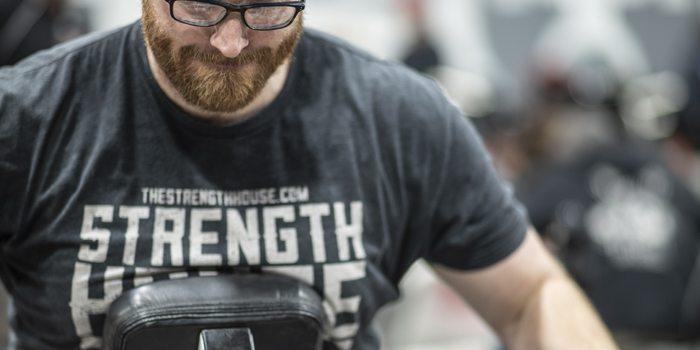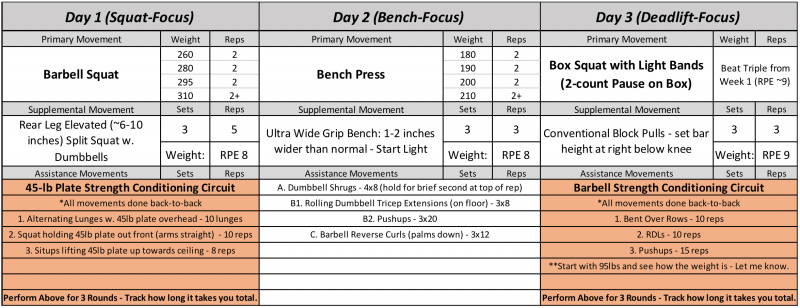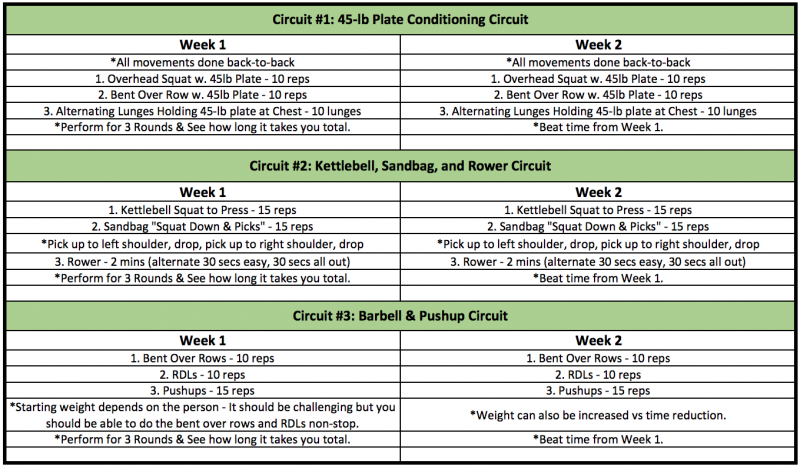
Over the past year, I have had to be creative with ways to maximize time in the gym for my clients and myself. When planning training, I always start by looking at the lifter's goals, priorities, and expectations so that we can determine the best way to organize training. Someone who has two jobs, a family, and is just trying to stay in shape will train differently than someone who is single, in college, and pursuing a more specific goal. The same goes for priorities; someone who is looking to set a world record at all costs will train differently than someone who has training further down on their priority list. Where a person’s priorities lie is their own personal decision, but what is important from my perspective is making sure their goals, expectations, and game plan align with those priorities.
I try not to use the phrase “I don’t have time” because I think the majority of us do if we really sit down and write out our schedules. But as I discussed above, how we choose to utilize our time will depend on where training fits into our lives. Many of my clients recently have had training as a top-five priority (so, important), but further down on the list behind things like work, school, family, relationships, etc.
Lifters who are juggling multiple time commitments in addition to training are often looking to maximize their time in the gym so they can get in and out of there within an hour so that they can get home to their families, get to their second job, etc. I have found multiple ways to allow lifters to make progress without a huge time commitment (none of them easy), but one of my favorites has been setting up assistance work in circuit-fashion in a way that uses the same equipment. None of these strategies are new—and have been done a million different ways by different people over the years—but I want to provide a few examples that you can use in your own training (if it fits with your goals and training setup).
These assistance work circuits are designed to be done after main strength work (primary and supplemental movements) and provide a time-efficient way to get some hypertrophy, muscular endurance, and basic conditioning in as part of training. Each of these individual circuits could technically be done after any training session (or on non-training days), but I prefer to do these after lower body training so they don’t interfere with the next lower body session. Here is one example of how these can fit into a training week. This is an excerpt from a greater training program, so the important thing here is to just see how the circuit fits into the training day order:
While these are designed to be done quickly in a circuit fashion, you should never start a rep until you can do it with good technique and with 100% effort. Always be mentally prepared and focused before you begin a set (which goes for any type of training). I design these differently depending on the lifter, but the following examples should at least give you some ideas as you work to maximize your own time in the gym. As always, I’m happy to provide feedback and ideas as you work on ways to evolve your own training! Below are three conditioning circuits that you can utilize as assistance work in your training sessions:












